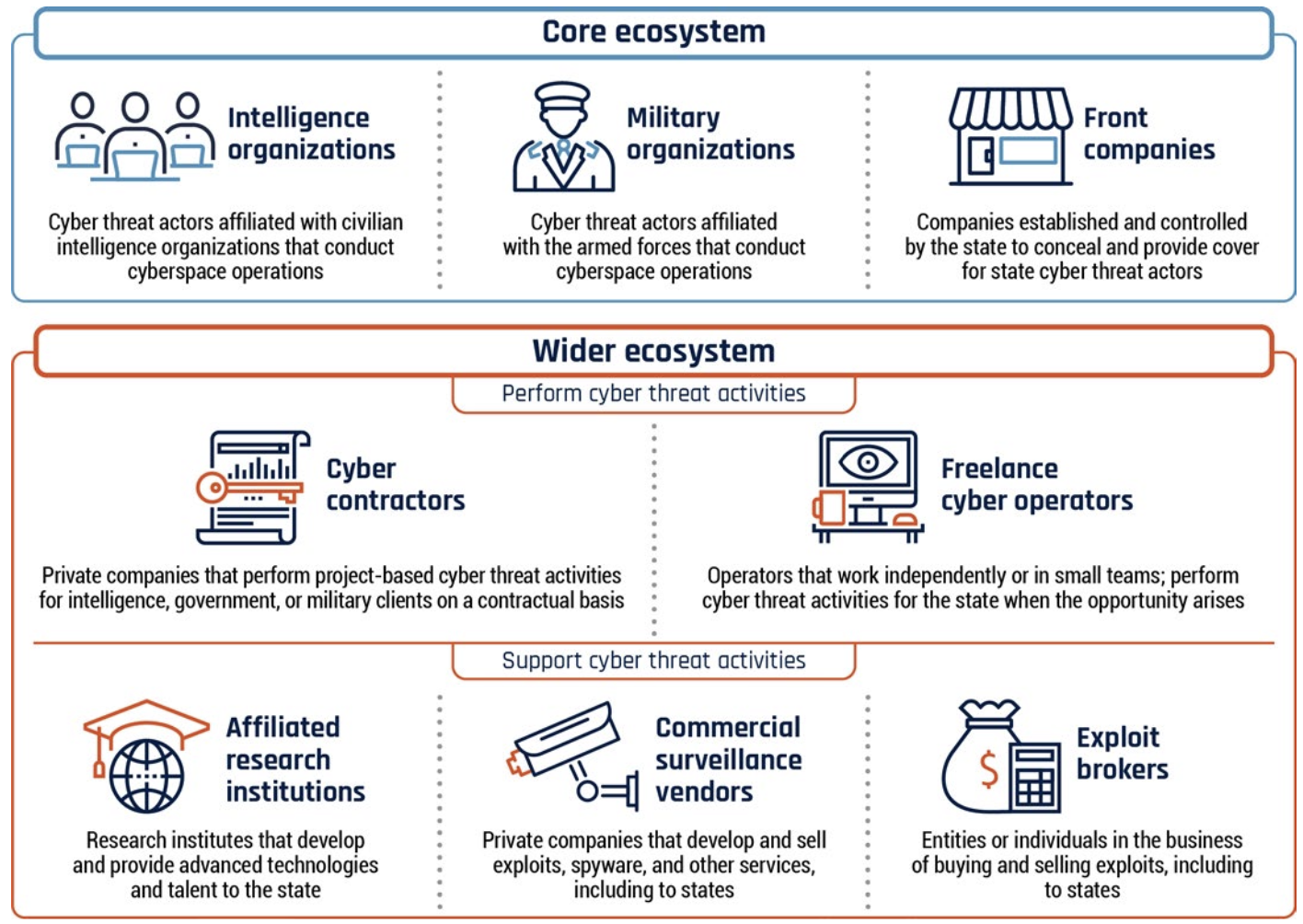How do cyber threats impact Canada’s national security, economy, and society?

The figure shows the state cyber program ecosystem to “support or perform cyber threat activities.” (Source: CCCS, 2024 p. 10)
The full report is available at the Canadian Centre for Cyber Security.
Canada’s National Cyber Threat Assessment 2025–2026 by the Canadian Centre for Cyber Security (CCCS), part of the Communications Security Establishment (CSE), brings forward an urgent question: How do cyber threats impact Canada’s national security, economy, and society? By examining the range of state and non-state cyber actors, emerging trends, and strategic vulnerabilities, the report provides insights for understanding Canada’s cyber challenges.
The CCCS identifies multiple state-sponsored actors using cyberspace operations to further political and economic agendas. China stands out as the most advanced adversary, targeting Canadian institutions for espionage, IP theft, and influence operations. Russia focuses on destabilization efforts through influence campaigns, while Iran and North Korea engage in cybercrime and ransomware to fund state agendas and control opposition. Meanwhile, India’s activities increasingly reflect diplomatic tensions with Canada, as its cyber capabilities expand.
The report also highlights cybercrime’s evolving landscape, especially ransomware, which remains a significant threat to Canada’s critical infrastructure. The growth of Cybercrime-as-a-Service (CaaS) facilitates attacks by allowing less-skilled actors to leverage advanced tools, significantly impacting healthcare, energy, and government services.
Emerging Trends and Recommended Solutions
Emergent trends such as AI-driven threats are reshaping this landscape. AI enables precision in phishing and social engineering, boosting the volume and personalization of attacks. Moreover, as cyber actors increasingly target edge devices and exploit domestic infrastructure, evasion becomes easier, challenging traditional defense mechanisms. Vendor concentration amplifies vulnerabilities, and dual-use technologies used by both civilian and military sectors, like satellite communications, are becoming high-priority targets for state-sponsored attacks.
In response, the CCCS calls for a robust strategy to build Canada’s resilience. Strengthened intelligence-sharing, both nationally and with Five Eyes allies, would help monitor and counteract these threats. The report also recommends intensified cybercrime enforcement, especially to disrupt ransomware and CaaS operations, and emphasizes investing in advanced detection technology to stay ahead of evolving tactics. Importantly, accountability from dominant tech providers is necessary to mitigate systemic risks, reinforcing the resilience of Canada’s digital ecosystem.
Implementing these solutions could significantly impact Canadian infrastructure, making essential services such as healthcare, transportation, and energy more resilient. It would also reinforce collaboration with the private sector, creating a more proactive cybersecurity posture across industries. A stronger defense against ransomware could stabilize the economy by reducing ransom payments and recovery costs for businesses and public institutions. Furthermore, bolstered cybersecurity would elevate Canada’s global standing, positioning it as a proactive and resilient cyber nation.
The National Cyber Threat Assessment 2025–2026 underscores the need for Canada to adopt a collaborative, technology-driven approach to cybersecurity. Strengthening defenses, investing in advanced tools, and fostering alliances are all essential for safeguarding Canadian citizens, economy, and national security. The report ultimately reflects Canada’s commitment to becoming a leader in cybersecurity resilience, aligning its efforts with global allies to tackle an increasingly complex cyber threat landscape.